The national debt in the United States is a common talking point on the part of both conservatives and progressives. Both parties like to discuss ways that the national debt could be reduced, though there are very different ideas about what is necessary to cut or add in order to affect the debt. It’s an issue that stretches back decades, as is seen in a new meme that is making the rounds on social media.
The Debt Goes Back Centuries
The United States government has had a continually fluctuating debt ever since it was first founded in 1789. The one exception is a year between 1835-1836, where then-president Andrew Jackson completely paid off the national debt.
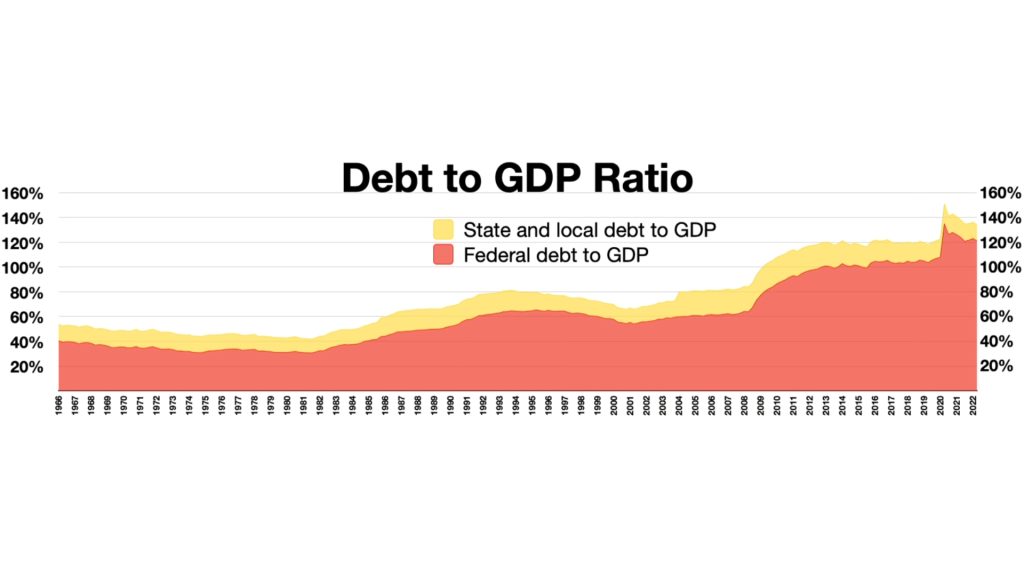
The widely-publicized amount of the national debt is a number that measures the total debt that is owed by the United States, based on the outstanding amount of money that the federal government owes Treasury security holders.
Treasury Securities Fund the Debt
Treasury securities are issued by the United States government to finance federal spending, and they can be purchased by just about anyone. They’re considered a generally safe investment, given that the United States has never defaulted on our national debt – though there have been a few times in recent years where it has come close.
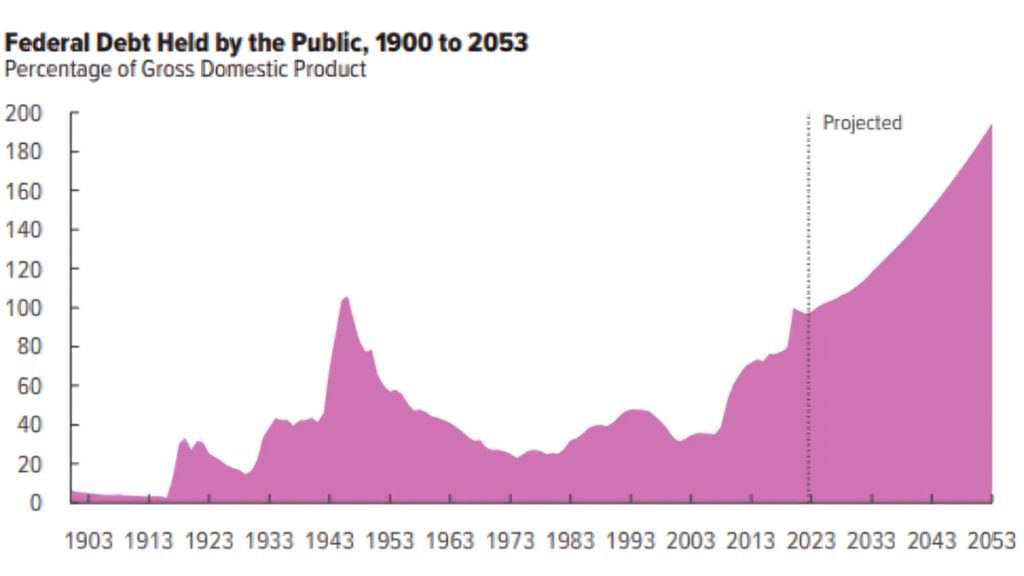
The key component to understand about the national debt is that it is the result of money that has already been spent by the federal government. It is not like consumer debt, where the goal is to ultimately pay off the amount owed. It’s a constantly fluctuating number based on a number of ever-changing factors.
The National Debt Fluctuates
The national debt, historically, would fluctuate largely in regards to both total GDP and global events. In the past, the debt has swelled with national and global events such as wars and recessions, and then reduced when the contributing factor ended.

For example, after WWII the percentage of national debt relative to GDP for the United States peaked at 113% of GDP in 1945, but then reduced some in the decades following. However, in recent years, the debt has swelled to massive numbers, unprecedented in United States fiscal history.
Contributing Factors
There have been many contributing factors to the swelling of the debt. The war in Afghanistan and the COVID-19 pandemic are two large factors that have contributed to the massive swelling of the United States debt, as well as the increasing hostility between political parties regarding government spending.
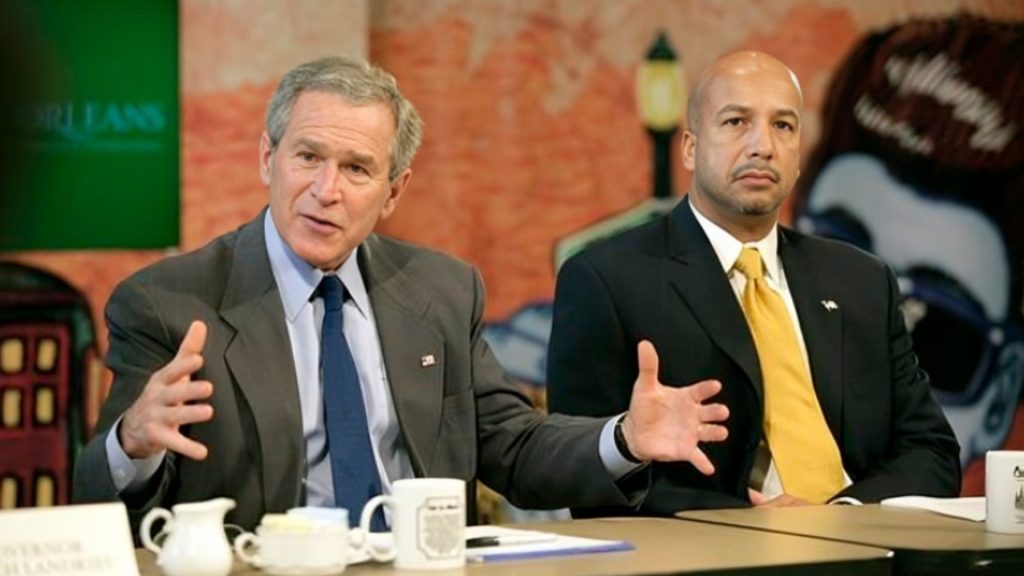
Conservatives have, historically, run on platforms that aim at reducing the national debt, often with promises of slashing various popular programs such as social security or medicaid, though they claim that these programs are never under consideration when it comes to cutting government spending in order to decrease the debt.
Multiple Solutions to the Problem
Government debt is not a one-size-fits-all problem, and there are many solutions that would go a long way towards decreasing the number that is always touted as a failing on the part of the government.

For instance, the national debt would be reduced as a total percentage of GDP if the United States were bringing in more money to be able to fund the programs that the debt covers. An adjustment to the taxation system where corporations and billionaires were asked to pay a greater percentage of their inflated incomes would achieve this goal, but taxation is never a conversation that conservatives want to have in relation to the debt.
Multiple Factors Contributing to the Problem
All of these factors – tax cuts for businesses and billionaires as well as contributing global events – have resulted in a national debt that has swelled to a massive $34 trillion. The debt first grew to $30 trillion in 2020 at the height of the COVID-19 pandemic, and it hasn’t come down since.

Politicians and average Americans alike have taken notice of the debt. Politicians have used it as a talking point ahead of the 2024 election, and average Americans have used it as an indication that the economy is doing much more poorly than it truly is.
The Internet Chips In
The internet has taken notice of the debt in a big way as well, and it has spewed both endless discourse among internet trolls and memes mocking the debt. One meme in particular has started making the rounds, drawing attention to a statement that Bill Clinton made about the debt back during his presidency.

Bill Clinton, for those who were too young during his presidency to remember, was a remarkably successful president when it comes to economic policy. His administration brought in budget surpluses for the fiscal years of 1998-2001, which have been the only such years between 1970 and 2023.
Clinton Had a Balanced Budget – Unlike Subsequent Presidents
Those four years had a balanced budget that was planned by the administration, and the surpluses allowed Clinton to bring the ratio of debt compared to the GDP down from 47.8% to a stunning 33.6%.
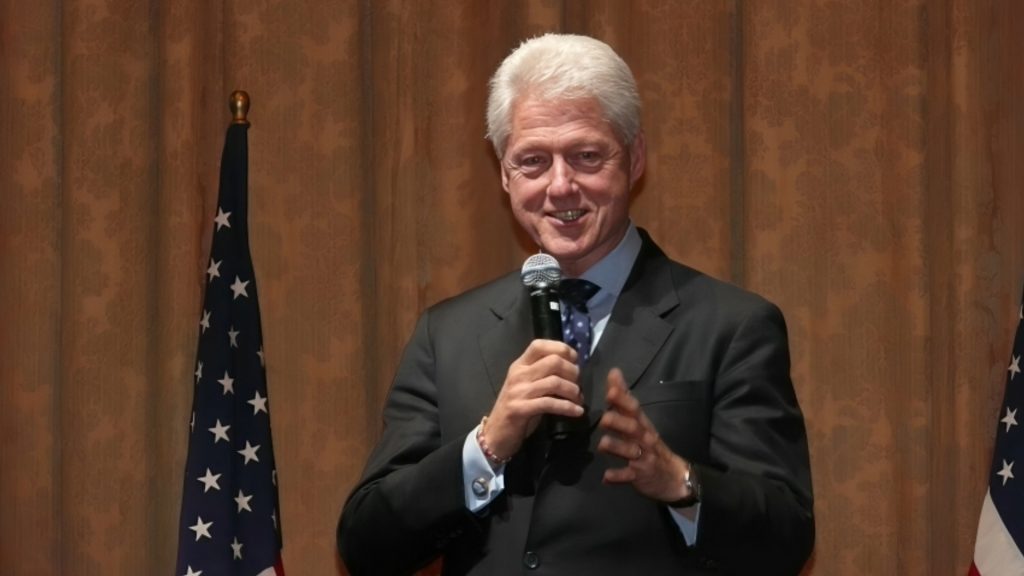
It is this history that allowed Clinton to make a bold statement near the end of his presidency, operating under the assumption that subsequent presidencies would be as economically successful as his own. He stated in a speech, “The new projections show that if we took that budget and committed the entire surplus to reducing the debt, we can make America debt-free by 2009.”
The Debt Was Much Smaller, Then
When Clinton made that speech, the national debt sat around $5.7 trillion. This was, of course, prior to 9/11 and the subsequent years of war that would follow, as well as the housing market crash in 2008. These factors affected the national debt in a big way, and couldn’t have been predicted when Clinton made his speech in 2000.

However, it hasn’t stopped individuals from making contemporary memes mocking the former president for his words that, to a modern audience, now appear out of touch and tone deaf. One such meme was posted recently on Twitter, drawing attention to the national debt then, and the inflated national debt now.
Elon Musk Weighs In
Of course, there were those who pointed out the fallacies of the meme, but one voice rose above the others as particularly involved in the conversation. Elon Musk, the owner and CEO of both Twitter and Tesla, had an opinion about the meme, to nobody’s surprise.

Elon Musk, even before he purchased Twitter and began his restructuring of the company, was deeply involved in internet culture. This habit has continued now that Musk is the owner of Twitter, and he often can be seen being involved in far-right discussions on the platform, pushing forward the conversation.
Commentary from Billy Markus
The meme about Bill Clinton is no exception. Musk reposted the meme to his followers, with the comment, “When you add unfunded obligations (like social security & medical), plus state & local debt, government debt will soon exceed $100 Trillion!”
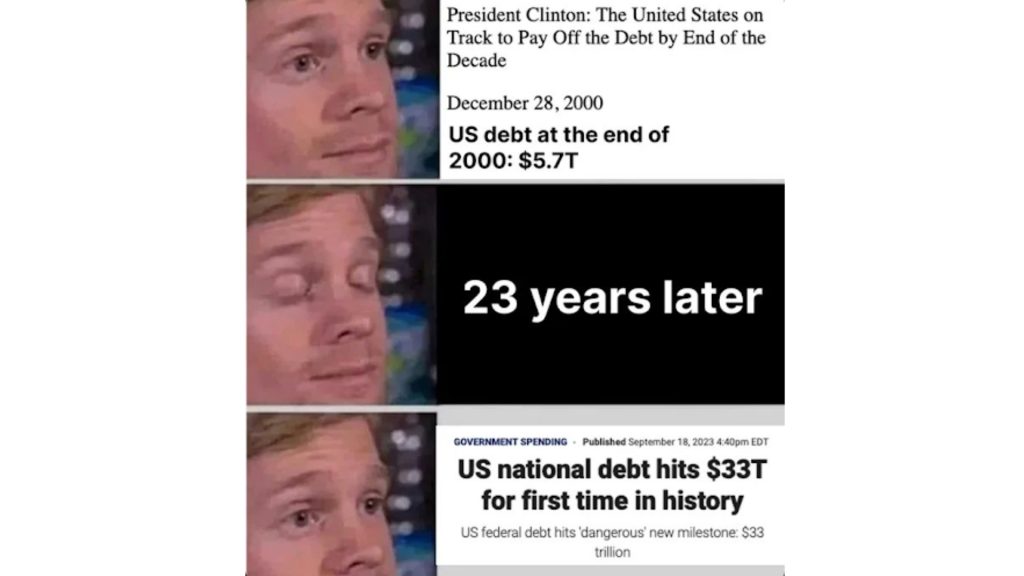
The original meme poster was Billy Markus, who is the creator of the cryptocurrency Dogecoin. Cryptocurrency is one of the controversial portions of the conversation around the economy and the national debt, as it’s an unregulated currency and therefore untaxed. It’s unsurprising that someone without skin in the game would comment on the national debt in the way that Billy Markus has, and even less surprising that Elon Musk agreed with him.
The Internet Blamed the Biden Administration
While it’s unfair to use an internet meme to draw massive conclusions about a situation as complicated as the United States national debt, that’s exactly what Musk’s followers did in response to the post.
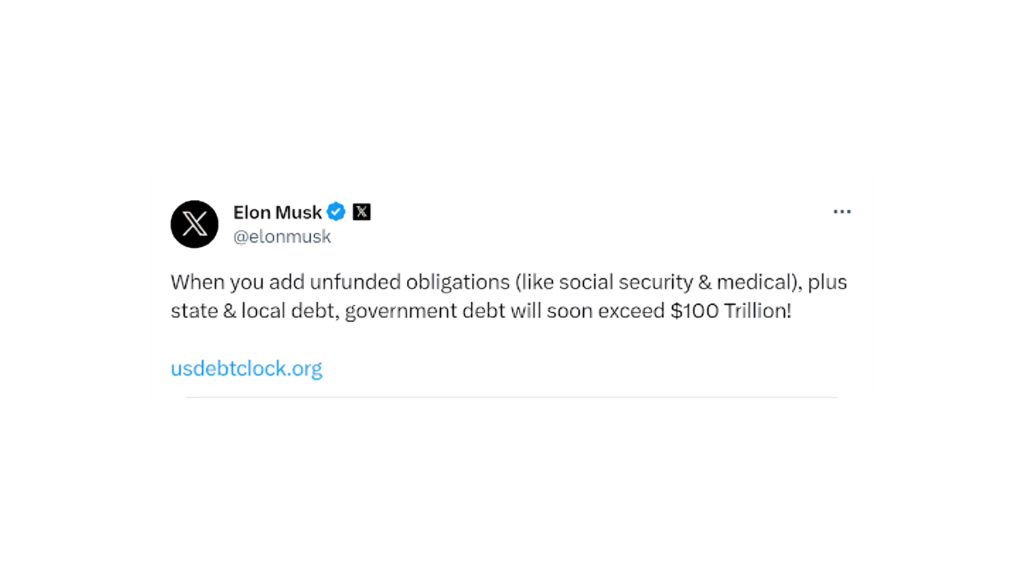
Many of the people who commented and shared the post used it as a vehicle to mock the current administration, pointing to the “excesses” of the Democratic party as the reason that the debt has grown so swiftly, and to such great numbers.
The Debt is Varied
Of course, as with all things regarding politics, the issue is far more complicated than that. Factors affecting the national debt are incredibly varied, as already discussed, and the decades since Clinton made his statement have not been kind to the national economy.

9/11 and the conflict in the Middle East during the Bush administration saw the national debt increase some, as can be expected with global events. However, 2008 and the subsequent years saw a significant increase in the national debt during the Obama administration.
Factors Contributing to the Increase
The national debt continued to climb during the Obama administration, and then saw another sharp increase after the Tax Cuts and Jobs Act was passed in 2017 during the Trump Administration. The tax cuts seen in that particular budget bill as well as the subsequent increase in government spending saw the United States debt balloon significantly.
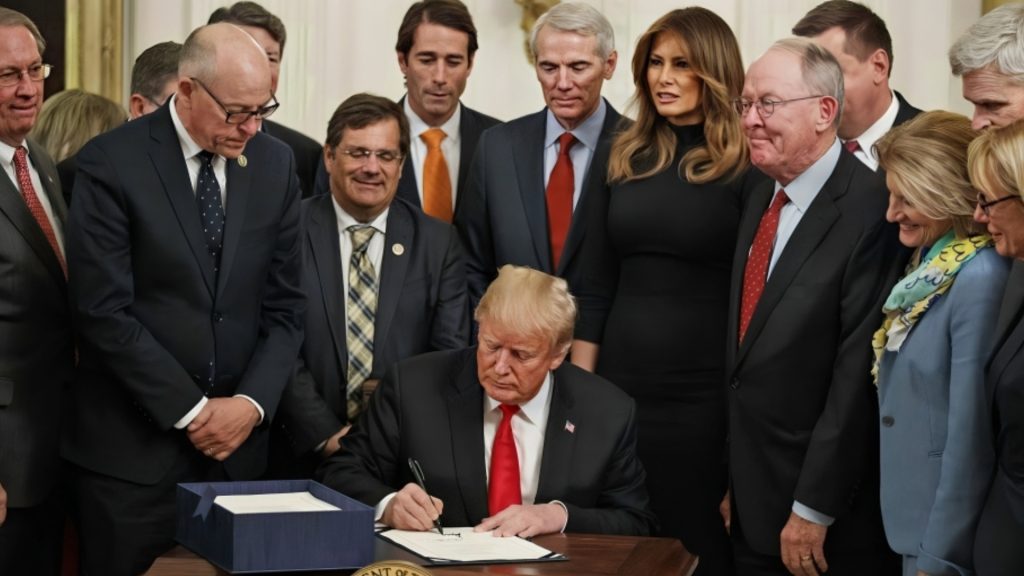
Finally, as is well known, in 2020 the COVID-19 pandemic had a significant impact on the national debt. GDP was down due to the pandemic and global factors increase spending massively, meaning that the debt swelled to the largest numbers that had been seen thus far.
Political Infighting Hasn’t Helped
As has been mentioned, generally after a large global event like a pandemic causes inflation in the debt, the debt will naturally come down after the contributing factor ends. High inflation and interest rates in the government, as well as infighting among Democrats and Republicans over paying our current obligations, though, have done nothing to help the debt numbers.
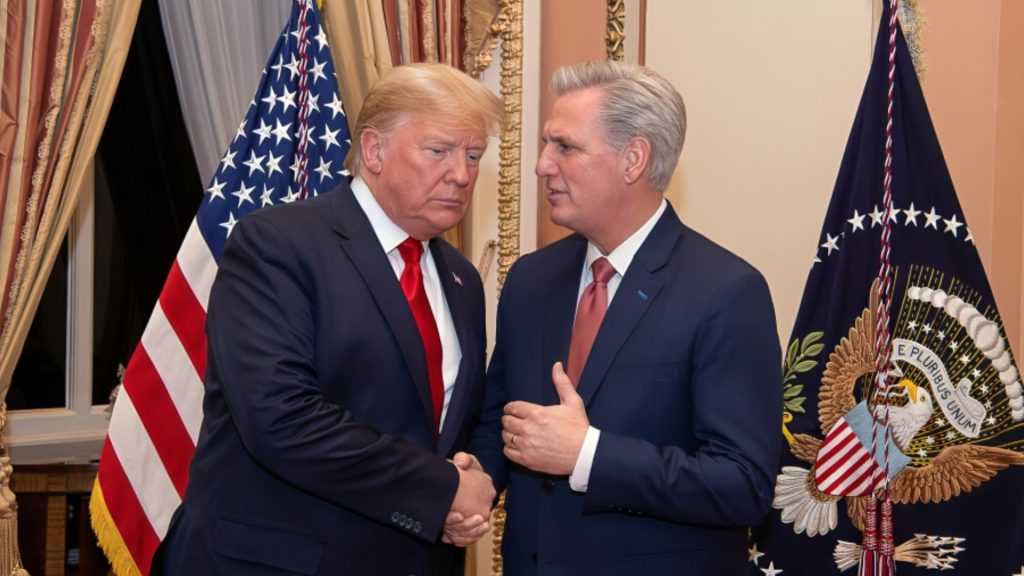
Of course, none of these contributing factors became a part of the discussion for Elon Musk and those who follow him on Twitter. The internet, unfortunately, lacks nuance, and a meme is easier to share with commentary when the reality of the situation is an afterthought.
All in the Shadow of Budget Proposals
All of this comes in the wake of Congress working on a budget plan for the upcoming year, after kicking the can down the road with continuing resolutions multiple times. The current Speaker of the House, Mike Johnson, has stated that he won’t accept an increase in the budget as Democrats are asking, but a government shut down looms if he refuses to compromise.

Of course, compromise with the Democrats is what lost the former Speaker of the House, Kevin McCarthy, the job after he made a deal with Democrats to raise the debt ceiling, despite vehement objections from his party. Government debt is a tricky conversation to have, even for those who do it for a living, and it appears that the tension around the debt ceiling and budget isn’t going anywhere anytime soon.
The Internet is Going to Internet
As far as the internet peanut gallery goes, nuanced conversation about issues as complicated as the debt is a pipe dream. Elon Musk has made clear through various posts and controversies that his priority is internet engagement, not being clear and informative about important issues.

Rage farming in this way has become an unfortunately common practice on the internet, and it won’t stop anytime soon. Particularly ahead of the 2024 election, more people are going to take to the internet to make comments and projections on topics that they are not experts on, and the internet will take the bait, every time.






